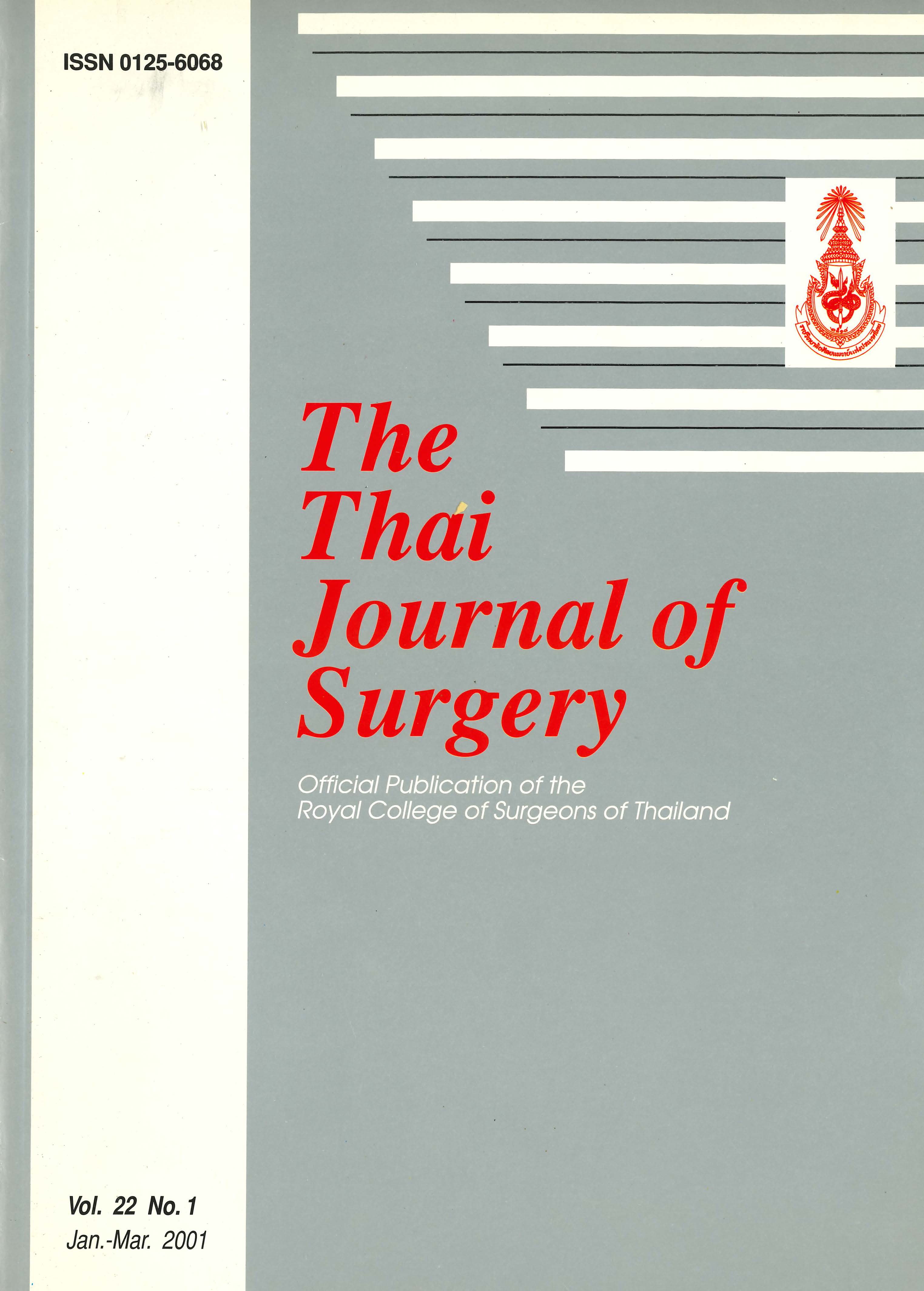Needle-Knife Papillotomy : An Adjunct to Therapeutic ERCP
Keywords:
Needle-knife papillotomy, Precut papillotomy, ERCPAbstract
Between January 1998 and September 2000 needle-knife papillotomy (NKP) was attempted in 21 patients after failure of conventional endoscopic biliary cannulation. The indications of ERCP included CB stones in 9, gallstone with abnormal liver enzymes or suspicious ultrasonographic findings in 5 and jaundice with dilated biliary duct in 7 cases. The success rate of cannulation was 76 per cent (16 in 21 patients) in the first session and 80 percent (4 in 5 patients) when attempted in the second session. Overall success rate was 95 percent. Complication rate was 9.5 per cent (2 in 21 patients) with mild pancreatitis in two patients. There was no mortality in this study.
In conclusion, NKP is a valuable adjunct to ERCP that allows safe, effective and high success rate for cannulation in cases that conventional access maneuver has failed
References
2. Kawai K, Akasaka Y, Murakami K. Endoscopic sphincterotomy of the ampulla of Vater. Gastrointest Endosc 1974;20:148-51.
3. Cotton PB. Endoscopic management of bile duct stones-apples and oranges. Gut 1984; 25: 587-97.
4. Leese T, Neoptolemos JP, Carr-Locke DL. Successes, failures, early complication and their management following endoscopic sphincterotomy result in 394 consecutive patients form a single center. Br J Surg 1985; 72: 215-9.
5. Geenen JE, Hogan WJ, Dodds WJ. Endoscopic sphineterotomy in patients with sphincter of Oddi dysfunction. N Engl J Med 1989; 320: 82-7.
6. Rollhauser C, Johnson M, Al-Kawas FH. Needle-Knife Papillotomy: A Helpful and Safe Adjunct to ERCP in a Selected Population. Endoscopy 1998; 30: 691-6.
7. Cotton PB. Precut papillotomy: a risky technique for experts only. Gastrointest Endosc 1989; 35: 578-9.
8. Baillie J. Needle-Knife sphincterotomy. Gastrointest Endosc 1990; 36: 645-6.
9. Bruins slot W, Schoeman MN, Disario JA, et al. Needle-Knife sphincterotomy as a precut procedure: a retrospective evaluation of efficacy and complications. Endoscopy 1996;28: 334-9.
10. Dowsett JF, Polydorou AA, Vaira D, et al. Needle knife papillotomy: how safe and how effective? Gut 1990; 31:905-8.
11. O'Connor HJ, Bhutta AS, Redmond PL, et al. Suprapapillary Fistulosphincterotomy at ERCP: A Prospective Study. Endoscopy 1997; 29: 266-70.
12. SiegcI JH. Precut papillotomy-a method to improve success of ERCP and papillotomy. Endoscopy 1980; 12:130-3.
13. Huibregtse K, Katon RM, Tytgat GNJ. Precut papillotomy via neddle-knife papillotomy: a safe and effective technique. Gastrointest Endosce 1986; 32: 403-5.
14. Siegel JH, Ben-Zvi J, Pullano W. The needle knife: a valuable tool in diagnostic and therapeutic ERCP. Gastrointest Endosc 1989;35: 499-503.
15. Leung JWC, Banez VP, Chung SCS. Precut (needle-knife) papillotomy for impacted common bile duct stone at the ampulla. Am J Gastroenterol 1990; 85:991-3.
16. Tweedle DEF, Martin DE. Needle-knife papillotomy for endoscopic sphincterotomy and cholangiography. Gastrointest Endosc 1991; 37:518-21.
17. Shakoor T, Geenen JE. Precut papillotomy. Gastrointest Endosc 1992; 38: 623-7.
18. Kasmin FE, Cohen D, Batra S, et al. Needle-knife sphincterotomy in a tertiary referral center: efficacy and complications. Gastrointest Endosc 1996; 44: 48-53.
Downloads
Published
How to Cite
Issue
Section
License
Articles must be contributed solely to The Thai Journal of Surgery and when published become the property of the Royal College of Surgeons of Thailand. The Royal College of Surgeons of Thailand reserves copyright on all published materials and such materials may not be reproduced in any form without the written permission.



